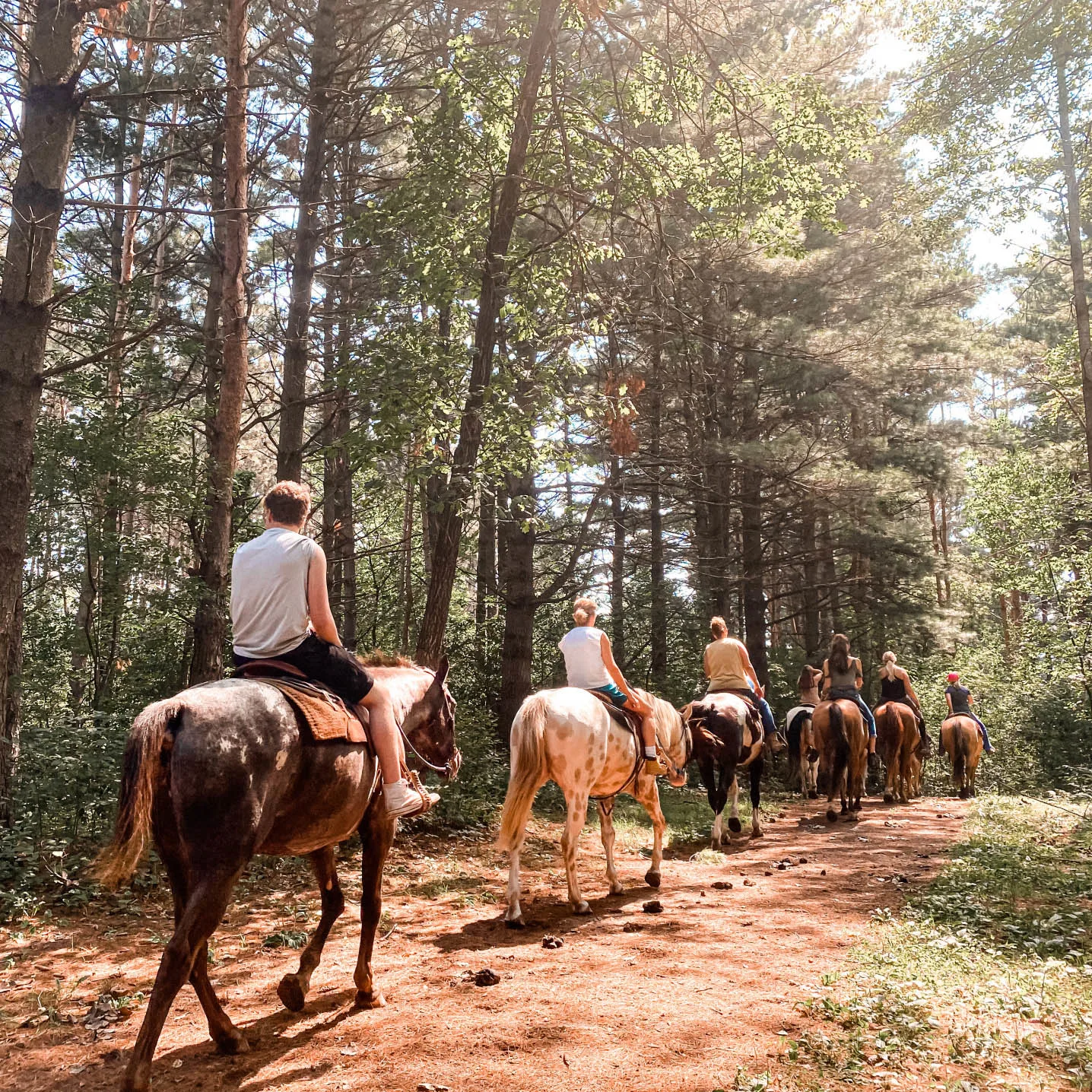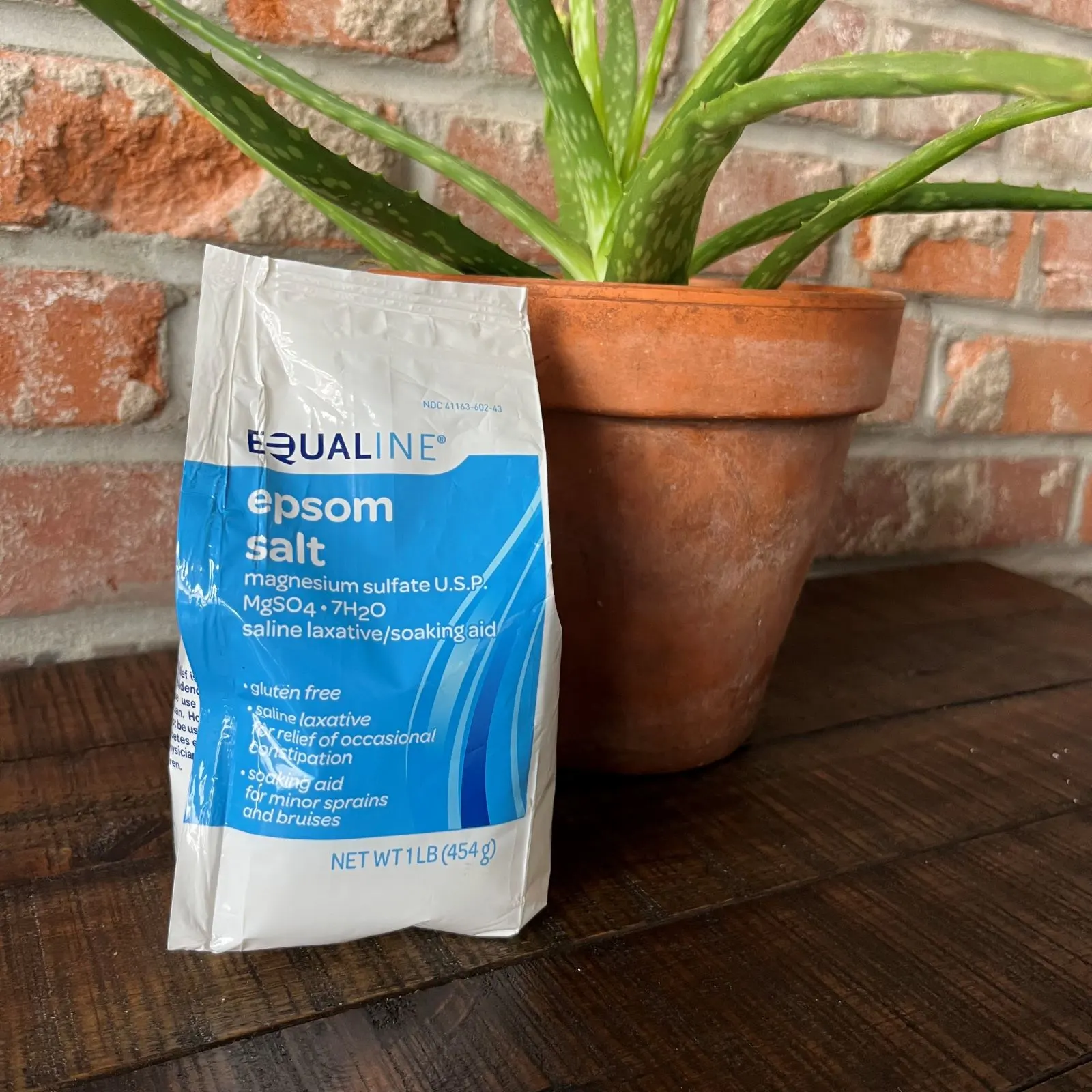It’s normal to feel sore after horseback riding- but a quick trail ride doesn’t mean you are doomed to days of stiffness and muscle soreness! Use the methods in this guide on how not to be sore after horseback riding to prevent muscle soreness from ruining your riding experience.
Why We Get Sore After Horseback Riding
Have you heard the expression that riding makes you sore in muscles you “didn’t even know you had”? Well, there’s truth in it for most people. Even casual horseback riding provides intense stretches to the muscles and tendons in the groin, thighs, and pelvic area. Athletic riding often produces soreness through the length of the leg, up through the lower abdomen, and through the body’s core.
When I first began seriously training as an equestrian- taking horseback riding lessons 3 times each week- I experienced so much soreness that I moved a television into my bathroom in order to stay entertained through the long soaks it took to stay limber following intense rides and occasional falls.

Ways to Prevent Soreness after Horseback Riding
While some soreness is inevitable, there are strategies to minimize discomfort. You don’t have to painfully waddle into the kitchen for coffee the morning after your first riding lesson, or wince through the remainder of your honeymoon after riding horses on the beach!
In the following steps, you’ll learn pro-rider approved strategies for helping ease post-riding soreness and stiffness- broken down into things to do before your ride, things to do during your ride, and things to do after your ride to prevent next-day muscle soreness.
Pre-Ride Soreness Prevention Strategies
Stretch before Riding
Riding is a workout, and just like with other workouts, it is important to stretch first. Develop a routine of whole-body stretches that you can do before and after you mount up to ensure all of your muscles are prepared and then do not tighten right back up afterward. It is also a good idea to run through some stretches daily to keep your muscles from tightening up in between rides.
Avoid Caffine & Simulents
To experience less soreness after riding, skip the caffeine and other stimulants before your ride. Anything that causes muscles to be tighter or tenser, like caffeine, will increase the number of microtears in muscles as they stretch through your ride and increase post-riding soreness. It is a good idea to avoid consuming caffeine or any other substances that are known to cause muscle tightening before riding
How to Horseback Ride while Preventing Soreness
Keep it Short
If you’re too busy to be sore or have an exciting week of vacation planned, don’t book the 2-hour beach trail ride or head out on a full day cattle drive excursion! The longer you spend in the saddle, the more your muscles will work and produce the microtears that lead to soreness. Keep rides to a few minutes for no soreness, or limit them to 30-40 minutes for mild but tolerable soreness the next day.
Avoid Tension
Staying relaxed while in the saddle will help to prevent soreness from riding. Tensing up your muscles for an extended period of time is likely to cause soreness. Breathing exercises are a great way to help with relaxation while riding. This is another time when yoga can come in handy.
Not only is it great for stretching those muscles we don’t use everyday, the meditation aspect of yoga can also promote relaxation along with positive breathing techniques.
The following section may contain affiliate links. As an Amazon Associate, we earn from qualifying purchases.
Prevent saddle sores
Not all soreness from riding is muscle related. Saddle sores are an example of skin irritation that can occur when riding. They are typically caused by friction; often from the clothing you are wearing, poor riding position, or an improperly fitting saddle. Once you have pinpointed the cause of saddle sores, you will be able to make adjustments to prevent them in the future. If additional friction relief is needed after making adjustments to your clothes, position, and equipment, moleskin or Body Glide may be able to help. Learn more about preventing saddle sores.
Things to Do after Horseback Riding to Prevent Soreness
Take an Epsom Salt Bath

One effective way to reduce soreness is to take a nice, relaxing bath after a ride. There are a couple of options for baths depending on what your body needs. A warm or hot bath will increase blood flow and help relax muscles, whereas a cold bath will constrict blood vessels, which reduces inflammation. You can also add Epsom salt to the bath to help decrease swelling, or essential oils to aid with relaxation. You can purchase my favorite Epsom salt here from Amazon!
Allow Your Body to Recover
Taking steps to reduce soreness is just as important after a ride as it is before.
Eating well ensures that your body receives the necessary nutrients to aid the healing process. The mending of bumps, bruises, and microtears from a day of riding all starts with a the nutritional building blocks that come from a good meal.
Drinking Water helps rehydrate after sweating and keep muscles hydrated and able to flex.
Sleep may be the most important part of recovery, as this is when your body does the majority of its healing. Try to get a restful night’s sleep after every ride to allow your body the opportunity to heal itself.
Supplements and Ointments
If you are looking for additional ways to aid your body’s recovery process, it may be beneficial to look into supplements or topical ointments. There are oral options, such as Arnica (purchase here from Amazon, or check out the topical version here), that can be used to help muscle recovery. BioFreeze is a popular topical gel that uses menthol to help alleviate muscle aches and joint pain (Amazon link here!). Either option can be used after riding to help with muscle pain and swelling.
Tips to Prevent Soreness When you Only Ride Occasionally
For riders who saddle up a few times a year- like for a vacation trail ride or honeymoon ride on the beach – avoiding soreness can be tricker. Here are some ways to make sure that ride doesn’t turn into a week of sore muscles:
Try Yoga Classes
It may also be helpful to do yoga between riding days. Yoga can be a great activity to fit into the daily routine of riders. The stretches will keep those muscles loose, as well as help with focus and an overall healthier lifestyle.
Build Up to Long Rides
Horseback riding requires the use of muscles that do not typically get worked while performing everyday tasks. This is a big reason muscle soreness happens in new riders, since these muscles need to be built up through use. Frequency and lengths of rides are important factors to keep in mind whether you are just starting out, or returning to riding after some time off.
If soreness is an issue, start out with shorter rides and build up to riding for longer. Just like with other sports, your body requires training and conditioning of the muscles to perform at its best. It is a good idea to keep riding on a regular basis so you can maintain the muscle you have built up. Going for a ride a minimum of every two weeks should help to alleviate muscle soreness.
Final Thoughts on Preventing Soreness after Riding Horses
Muscle soreness can be a painful side effect of riding, but these options are a few ways to help keep it at bay. With regular time spent in the saddle, increased stretching, and self-care, the muscle soreness should become less and less frequent.
